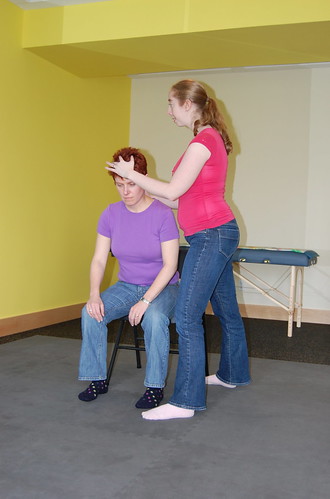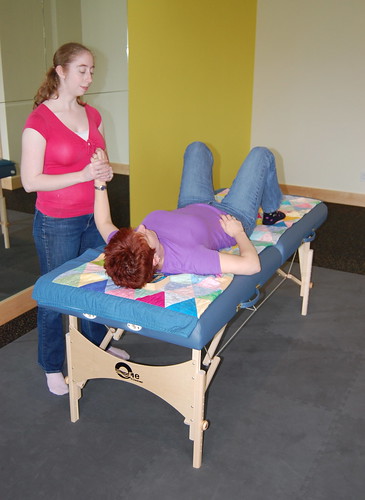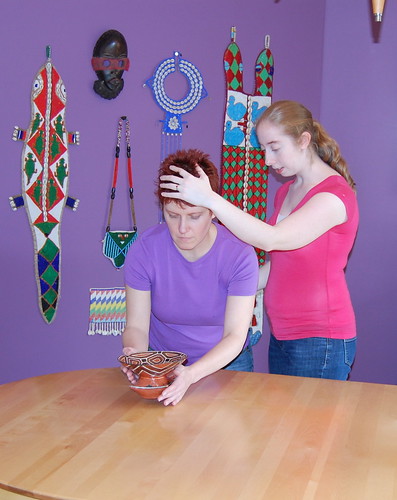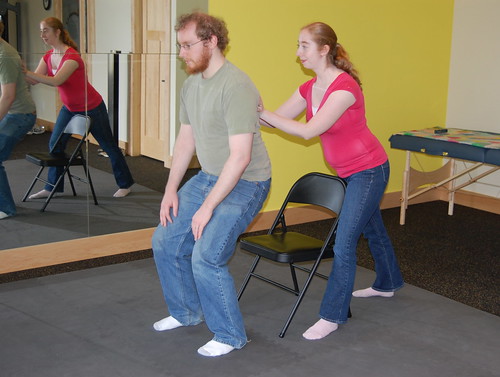FAQ
How long do lessons last?
Lessons last approximately 45 minutes, at a starting frequency of once or twice a week.
What should I expect from a typical Alexander lesson?
 A typical AT lesson with me contains three phases: chair, table, and application work. During chair work, I use gentle hands-on guidance and verbal instruction to help you explore different ways of moving as you sit down in a chair and stand up out of it. We examine the habitual ways you use your body and how they may help or hurt you in your endeavors, using as our sample the relatively simple and well-practiced movements of sitting down and standing up.
A typical AT lesson with me contains three phases: chair, table, and application work. During chair work, I use gentle hands-on guidance and verbal instruction to help you explore different ways of moving as you sit down in a chair and stand up out of it. We examine the habitual ways you use your body and how they may help or hurt you in your endeavors, using as our sample the relatively simple and well-practiced movements of sitting down and standing up.
 Table work explores another facet of habit, as you lie on a massage table and I use gentle manipulation to lengthen and widen your physical structure. This releases any pent-up tension that may have built up as a result of your individual habits of use, and brings your attention to observing your body and how your daily routines have affected it.
Table work explores another facet of habit, as you lie on a massage table and I use gentle manipulation to lengthen and widen your physical structure. This releases any pent-up tension that may have built up as a result of your individual habits of use, and brings your attention to observing your body and how your daily routines have affected it.
 The remainder of the lesson is spent applying the principles we’ve explored to the student’s specific activities. Whether it be dancing, playing sports, sitting at a computer, running in heels, handling ancient artifacts, or any other activity, the Alexander Technique can help you to perform it with minimum effort and maximum efficiency.
The remainder of the lesson is spent applying the principles we’ve explored to the student’s specific activities. Whether it be dancing, playing sports, sitting at a computer, running in heels, handling ancient artifacts, or any other activity, the Alexander Technique can help you to perform it with minimum effort and maximum efficiency.

Do I have to undress?
No. The technique is about learning a new way of moving in everyday life, so lessons are taught in street clothes. I recommend comfortable clothing that doesn’t camouflage your body but is not restricting either. I do recommend that shoes be removed for lessons, as they change the placement of weight on the feet, but it’s not strictly necessary.
Is the Alexander Technique anything like Pilates/Yoga/Massage/Chiropractic/etc.?
 The short answer is no. While it often gets lumped under the same umbrella as other “somatic” practices, the truth is that AT is a very different kind of technique. What really sets it apart is the re-education component. Rather than being a set of exercises or a recuperative treatment, AT really is a skill you learn. It’s a method that teaches you how to be aware of your habits and gives you the tools to change them yourself. Its philosophical principles can be applied to every aspect of life, and used to change and improve habits of the mind as easily as those of the body. This is why we use the terms “teacher” and “student”; as a student, you and your body are actively learning a new way of moving and how to apply that new way of moving to everything you do.
The short answer is no. While it often gets lumped under the same umbrella as other “somatic” practices, the truth is that AT is a very different kind of technique. What really sets it apart is the re-education component. Rather than being a set of exercises or a recuperative treatment, AT really is a skill you learn. It’s a method that teaches you how to be aware of your habits and gives you the tools to change them yourself. Its philosophical principles can be applied to every aspect of life, and used to change and improve habits of the mind as easily as those of the body. This is why we use the terms “teacher” and “student”; as a student, you and your body are actively learning a new way of moving and how to apply that new way of moving to everything you do.


